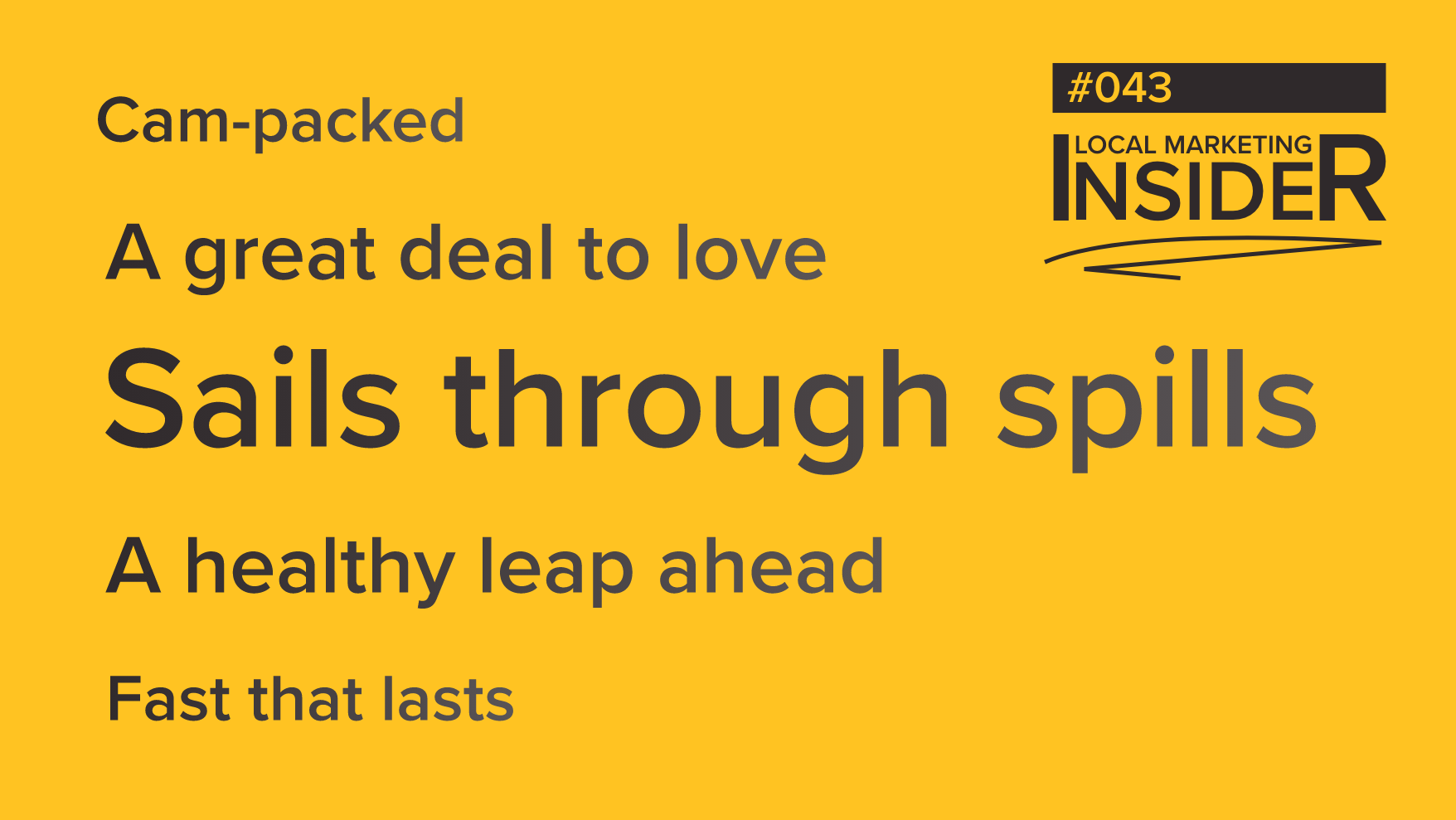-
Products
TechnologyManaged Services
- Resources
- Pricing
- Company
Surprisingly, it’s easy. Copywriting examples from iPhone 14 launch.

The new iPhone 14 came out a couple of weeks ago.
I’ve been an iPhone user for many years now. And a couple of months back my phone died in Denver. In a how-did-people-live-without-these moment of panic, I bought a new one. Suffice it to say I’m not in the market.
And yet, when the new one came out I looked at it. Unsurprisingly, I was mildly transfixed.
Reading through the product page for the iPhone 14, I started wondering: What exactly is going on here? Yes, the images are visually appealing (understatement), but the words are uniquely “Apple.”
I had a hunch Apple has a copywriting framework, a framework the LMI readers could apply to their own marketing.
After some research, I found that Apple’s copywriting is very predictable, almost formulaic.
There are five staple copywriting techniques used by the multi-trillion dollar brand. To my delight, they are remarkably easy to emulate. It’s not unreasonable to think you could add some Apple flair to your website in an afternoon writing session.
Using examples from Apple’s recent product launches, I was able to find numerous examples of each technique. At the end of the article, for you writing pros, I’ve included a few examples of Apple copywriting that combine multiple techniques simultaneously.
Repeat Keywords. Repeat Success.
Credit: Apple
Repetition appears to be a favorite amongst the Apple marketing team. Here’s how it’s done: identify the most important feature of the website section, boil it down to a single word, and repeat that keyword multiple times.
“Your photo. Your font. Your widgets. Your iPhone.”
Keyword: Your
“Always-On display. Always at the ready.”
Keyword: Always
“The Pro camera system gets massively more Pro.”
Keyword: Pro
“A battery that is all in, all day.”
Keyword: All
More Contradictions. Less Confusion.
Credit: Apple
Often, Apple will create some surprise by pairing contradicting and opposite words together. It's a clever, useful tool for describing a feature. Plus, taking two opposing viewpoints gives more detail.
Credit: Apple
Double Meaning, Say Two Things in a Single Phrase
Credit: Apple
“A huge Plus for [battery life]” is talking about battery improvements and naming the phone model in one, concise statement.
"Beautifully durable"
The iPhone 14 is at the same time beautiful and functionally strong.
"A healthy leap ahead."
Much of the focus of the new Watch 8 is on its functionality as a tool for health and athletic performance. Elsewhere on the site the term “huge leap” is found to describe a product’s improvements over the previous model.
Here, swapping “healthy” for “huge” describes both the app’s technological improvements while also commentating on the focus of the product’s value prop: health.
It’s Time to Rhyme
Credit: Apple
Apple’s writing is polished, reflective of its massive size and importance, without losing all fun and personality. They sell consumer products, after all.
Apple uses rhyme to add some fun and flair to its copy.
"Sails through spills"
iPhone 14 offers dependability with water resistance.
"Fast that lasts"
iPhone 14 has a chip that is fast enough for mobile gaming but also battery efficient.
“Up to 4x the resolution. For jaw-dropping cropping."
iPhone 14 Pro has a high-resolution camera with enough pixel density to enable cropped photos that still look good.
Use Pop-Culture References. A Cliche is Worth 1,000 Head Nods.
Credit: Apple
You’ll often find Apple copy that is a spin on a common phrase but about the product. Like the example above “jam-packed” but tweaked to refer specifically to the camera.
Coincidentally, while doing my normal deadline-approaching-what-the-hell-do-I-write-about research process, I read an article that reinforced this idea: Absolutely use cliches in your copywriting.
Eddie, the author, concludes that using cliches in copy is a good technique. Why make the reader think more? Cliches are efficient.
Apple agrees.
Credit: Apple
A classic relationship cliche repurposed to espouse the value of video stabilization software.
"Cinematic mode now shoots in 4K HDR at 24 fps - the film industry standard. Have your people call our people."
Iconic phrase.
"A camera in a class by itselfie."
Clever, and culturally relevant.
"Rebuilt from the sound up.”
Swap one word to make it relevant to the product.
“A marvel of modern silence.”
Again, a single word swap, talking about AirPods Pro noise-canceling technology.
For the Pros: Two Techniques, One Headline
Occasionally, Apple will apply multiple techniques to a single headline. Clever stacked on top of clever.
“A great deal to love.”
For Watch SE, the affordable watch model, this headline combines a common phrase and double meaning. The Watch SE is priced to be a “great deal”, which presumably you will love, while also it provides many features you will also love.
“More connected, far and away.”
This Watch 8 headline talking about international connectivity combines contrast and double meaning. “More connected” and “far and away” are contrasting phrases. Meaning number one is to be more connected to family and friends that are physically far away. Meaning number two is that the connection functionality is far and away better than other technologies available.
“So much more than before. And so much less, too.”
This is my only old reference: here, the copy describes the iPhone 5 through both repetition and contrast. The headline describes its form factor, a slimmer profile paired with a larger screen. The keyword “so much” is repeated in both lines, with the contrast coming from “more” and “less” being used to describe the same phone.
Here are the Apple-inspired headlines I came up with for Widewail after writing this article:
Read the other 42 articles. Subscribe.
See you in 2 weeks - Jake, Marketing @Widewail
I’m the Director of Marketing here at Widewail, as well as a husband and new dad outside the office. I'm in Vermont by way of Boston, where I grew the CarGurus YouTube channel from 0 to 100k subscribers. I love the outdoors and hate to be hot, so I’m doing just fine in the arctic Vermont we call home. Fun fact: I met my wife on the shuttle bus at Baltimore airport. Thanks for reading Widewail’s content!
Bite-sized, to-the-point, trend-driven local marketing stories and tactics.
Automated Review Generation
Video Testimonial Generation

Maintain Accurate Listings

Private Surveys
Review Response Managed Services
Social Media Engagement Services
©Widewail 2025.
U3GM Blog Post Comments